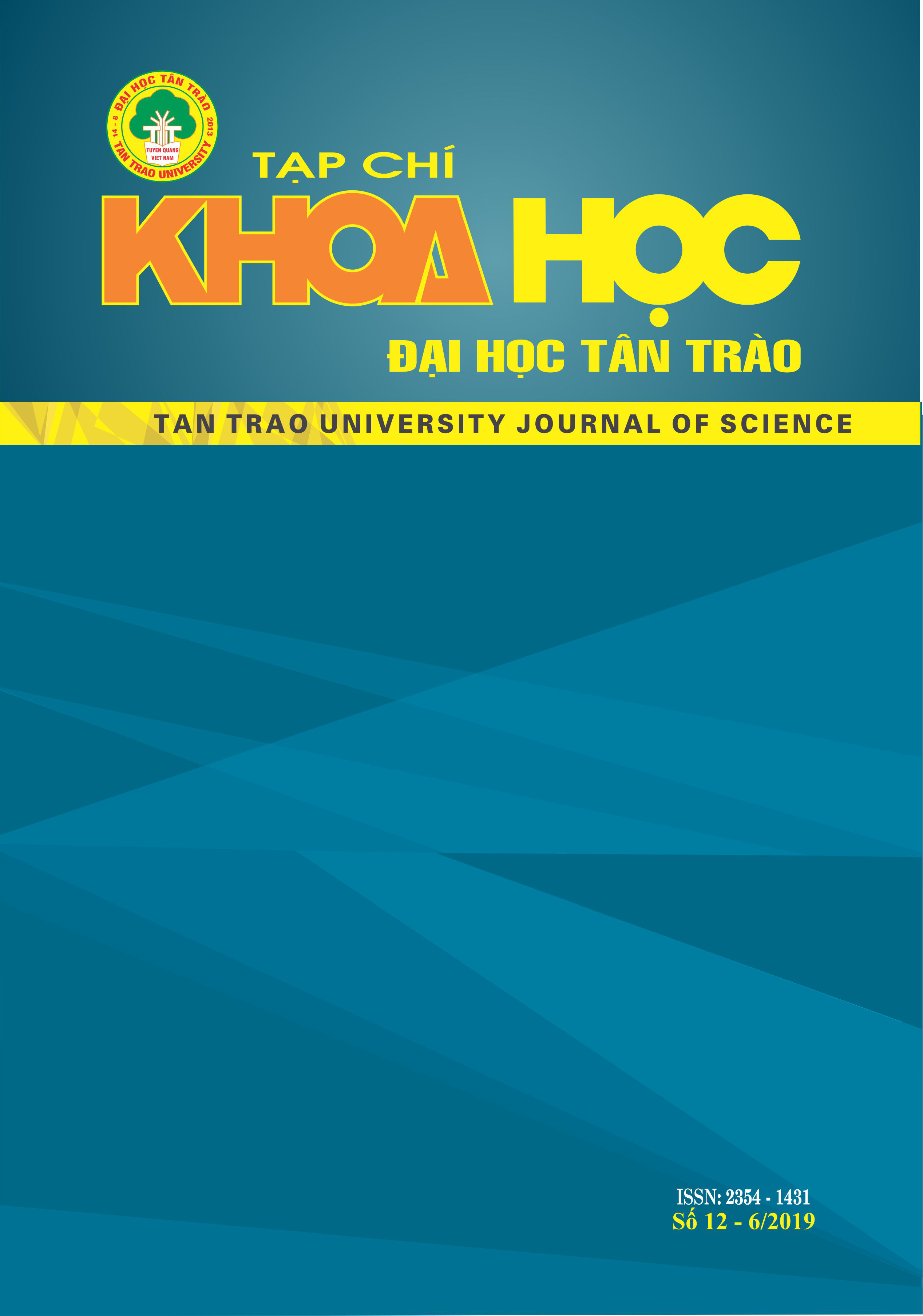The role of plants in the Tan Trao historic areas of, Tuyen Quang province and solutions for diversity protection of plants
DOI:
https://doi.org/10.51453/2354-1431/2019/262Keywords:
Diversity; solutions; historic areas; Tuyen Quang province.Abstract
This article presents the results of the initial research on the role of plants in the Tan Trao historic areas: The role of plants in landscape protection; The role of plants in the livelihood of the people; The role of plants in tourism development. The article also provides a scientific basis for proposing solutions for plant variety protection and offers 08 plant variety protection solutions, including: Solutions on policies, organizing management; Solutions on economy and society; Solutions on science and technology; Silvicultural solutions to promote natural regeneration, zoning for forest restoration; Solutions to exploit and use rational plant resources; Solutions to conserve plant diversity; Solutions for human resource development and community development; Solutions on regional integration and international cooperation.
Downloads
References
1. Đỗ Công Ba, Lê Ngọc Công, Lê Đồng Tấn (2017), Một số kết quả nghiên cứu về hiện trạng thảm thực vật ở khu di tích lịch sử Tân Trào, tỉnh Tuyên Quang, Nxb Tạp chí khoa học ĐHQGHN, Khoa học Tự nhiên và Công nghệ, tập 33, số IS (2017) 14-21.
2. Đỗ Công Ba, Lê Ngọc Công, Lê Đồng Tấn (2018), Đa dạng thực vật bậc cao có mạch tại khu di tích lịch sử Tân Trào, tỉnh Tuyên Quang, Nxb Tạp chí khoa học ĐHQGHN, Khoa học Tự nhiên và Công nghệ, tập 34, số 4 (2018) 1-3.
3. Bộ Nông nghiệp và Phát triển Nông thôn (2000), Tên cây rừng Việt Nam, Nxb Nông nghiệp, Hà Nội.
4. Chính phủ nước Cộng hòa xã hội chủ nghĩa Việt Nam (2006), Nghị định 32/2006/NĐ-CP về quản lý thực vật rừng, động vật rừng nguy cấp, quý hiếm.
5. Hoàng Chung (2008). Các phương pháp nghiên cứu quần xã thực vật, Nxb Giáo dục, Hà Nội.
6. Phan Hữu Dật (2014), Một số vấn đề về dân tộc học Việt Nam, Nxb Đại học Quốc gia, Hà Nội.
7. Phạm Hoàng Hộ, Cây cỏ Việt Nam, tập 1,2,3, Motreal, 1991, 1992, 1993.
8. Trần Đình Lý (1993), 1900 loài cây có ích ở Việt Nam, Nxb Thế giới.
9. Phan Ngọc (2004), Bản sắc văn hóa Việt Nam, Nxb Văn Học.
10. Trung tâm Khoa học Tự nhiên và Công nghệ Quốc gia (2005), Danh lục các loài thực vật Việt Nam, Nxb Nông nghiệp, Hà Nội.
11. Nguyễn Nghĩa Thìn (2008), Các phương pháp nghiên cứu thực vật, Nxb Đại học Quốc gia, Hà Nội.
12. Quyết định số 548/QĐ-TTg ngày 10/05/2012 của Thủ tướng Chính phủ về việc xếp hạng di tích quốc gia đặc biệt.
13. Quyết định số 2073/QĐ-TTg ngày 22/12/2017 của Thủ tướng Chính phủ phê duyệt Quy hoạch tổng thể phát triển khu du lịch quốc gia Tân Trào, tỉnh Tuyên Quang đến năm 2030.
14. Raunkiear C (1934), Plant life forms, Claredon, Oxford, 104.
Downloads
Published
How to Cite
Issue
Section
License

This work is licensed under a Creative Commons Attribution-ShareAlike 4.0 International License.
All articles published in SJTTU are licensed under a Creative Commons Attribution-ShareAlike 4.0 International (CC BY-SA) license. This means anyone is free to copy, transform, or redistribute articles for any lawful purpose in any medium, provided they give appropriate attribution to the original author(s) and SJTTU, link to the license, indicate if changes were made, and redistribute any derivative work under the same license.
Copyright on articles is retained by the respective author(s), without restrictions. A non-exclusive license is granted to SJTTU to publish the article and identify itself as its original publisher, along with the commercial right to include the article in a hardcopy issue for sale to libraries and individuals.
Although the conditions of the CC BY-SA license don't apply to authors (as the copyright holder of your article, you have no restrictions on your rights), by submitting to SJTTU, authors recognize the rights of readers, and must grant any third party the right to use their article to the extent provided by the license.


